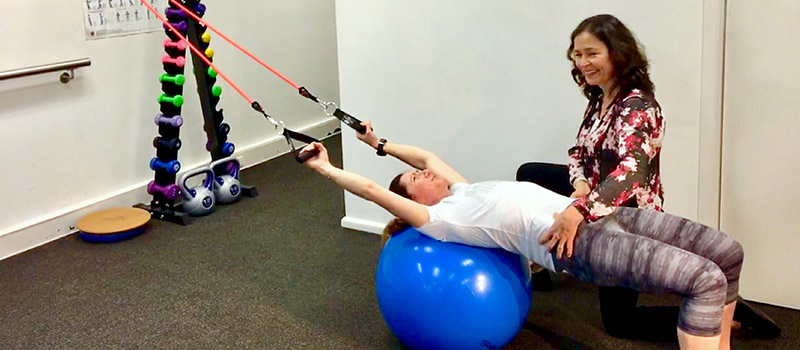Core Stability Advice – Sydney City CBD
Core stability is fundamental for maintaining good posture and protecting the back or spine. It is the foundation for all other exercise and movement.

Where is my core?
The term “core” refers to your trunk – between ribcage and pelvis. This is like a cylinder – the walls of the cylinder are your abdominal muscles (and spine/spinal muscles at the back), the floor of the cylinder comprises your pelvic floor muscles and the roof is your diaphragm (main muscle of breathing). If these muscles are working optimally you should be able to move and breathe freely while staying stable.
Why is it important to be stable?
There are muscles throughout the body whose function it is to provide stability (including the rotator cuff muscles of the shoulder and the deep hip muscles). This stability allows big strength muscles to do their job of carry, throw, jump without injuring the joint. Similarly, the deep core muscles stabilize the trunk like a brace so that the back is not injured with lifting, bending and sitting. The core also provides a strong platform for delivering strength from the limbs. You might imagine a footballer with a wobbly core is unlikely to run fast, and is more likely to sustain injury. For this reason, core exercises are often included in the rehabilitation of upper and lower limb injuries, not just back complaints.
Our core not only helps us be active, but also helps us be still. If you are someone who “props” on walls and furniture, who can’t sit unsupported, or hangs on one hip while standing, you may have a weak core. Improving your core muscle activity may help avoid pains due to these asymmetrical postures and allow you to be comfortable in static postures.
How do I strengthen my core?
Adopting good posture is the first and best way to allow your core to activate automatically. Additionally, practicing “low level” core exercises (with very little effort, and allowing normal breathing) is helpful to assist you with static postures. These teach the core to come on just enough to support the spine, without other big muscles in the body trying to do that job.
For the purposes of loading up the limbs for e.g., carrying, sport, or heavy gardening, it is also good to do more “high level” exercises to improve core strength. These will prepare your body for greater demands, and protect the spine whilst doing heavy jobs. These might include planks and crunches.
For the purposes of tasks such as lifting and carrying, it is also important to have strength around the hips and thighs so that these muscles take on most of the load.
Which is the best class for core stability?
Pilates classes are specifically designed for improving core stability. However, if you engage your core muscles well, you will also strengthen them doing general gym classes and yoga classes. Even doing a weights programme at the gym can strengthen your core, provided you activate these muscles when you do your lifting. At Macquarie Street Physiotherapy, we run “core activation” classes which include a variety of Pilates, yoga, strength and balance exercises. We can also take you individually through the best methods for core “recruitment” whilst training in other settings such as for sport or gym. We also offer strength classes using state of the art equipment. If you live or work in the Sydney City CBD, contact us to discuss which class is best for you.








